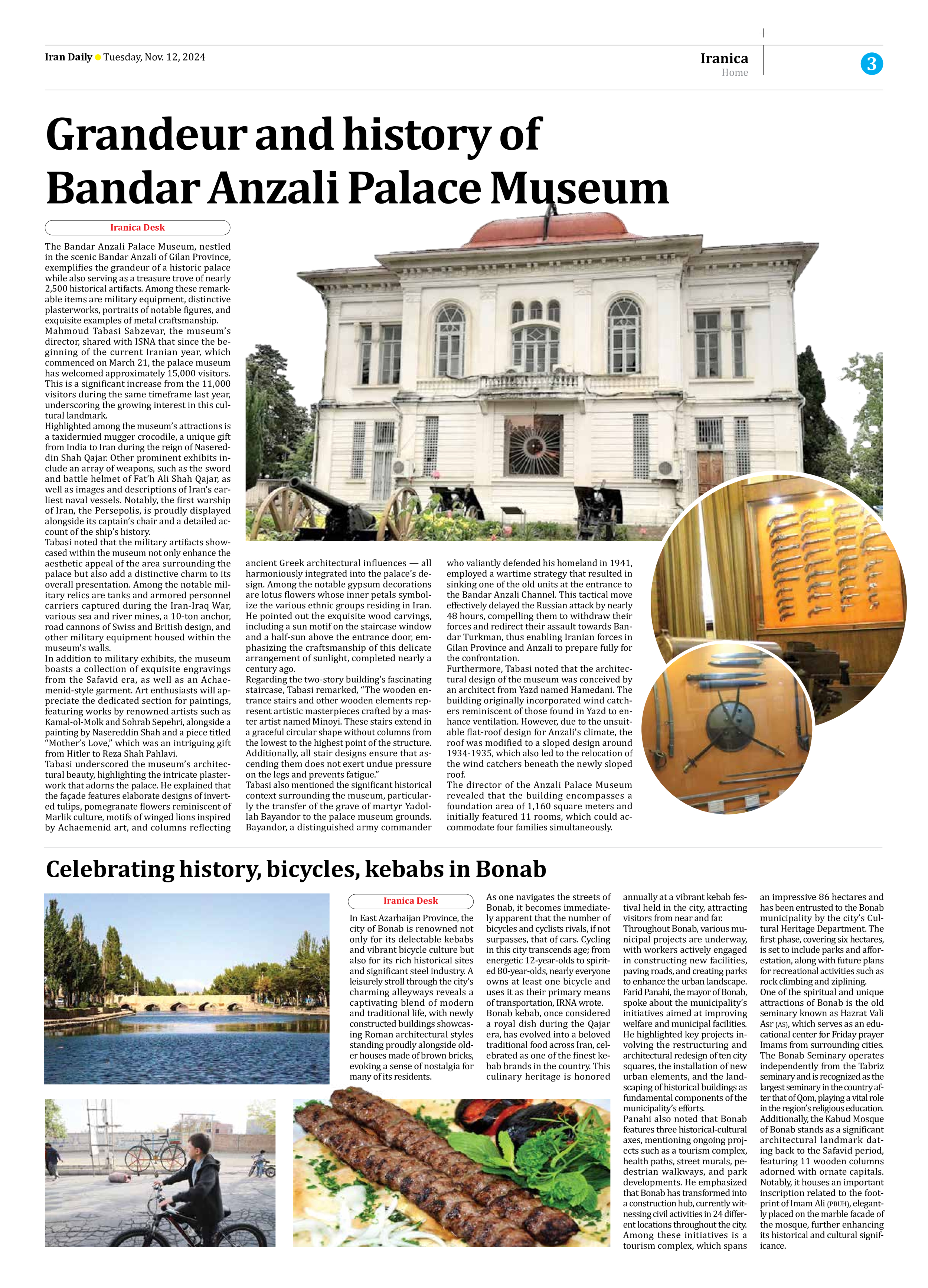
Celebrating history, bicycles, kebabs in Bonab
In East Azarbaijan Province, the city of Bonab is renowned not only for its delectable kebabs and vibrant bicycle culture but also for its rich historical sites and significant steel industry. A leisurely stroll through the city’s charming alleyways reveals a captivating blend of modern and traditional life, with newly constructed buildings showcasing Roman architectural styles standing proudly alongside older houses made of brown bricks, evoking a sense of nostalgia for many of its residents.
As one navigates the streets of Bonab, it becomes immediately apparent that the number of bicycles and cyclists rivals, if not surpasses, that of cars. Cycling in this city transcends age; from energetic 12-year-olds to spirited 80-year-olds, nearly everyone owns at least one bicycle and uses it as their primary means of transportation, IRNA wrote.
Bonab kebab, once considered a royal dish during the Qajar era, has evolved into a beloved traditional food across Iran, celebrated as one of the finest kebab brands in the country. This culinary heritage is honored annually at a vibrant kebab festival held in the city, attracting visitors from near and far.
Throughout Bonab, various municipal projects are underway, with workers actively engaged in constructing new facilities, paving roads, and creating parks to enhance the urban landscape. Farid Panahi, the mayor of Bonab, spoke about the municipality’s initiatives aimed at improving welfare and municipal facilities. He highlighted key projects involving the restructuring and architectural redesign of ten city squares, the installation of new urban elements, and the landscaping of historical buildings as fundamental components of the municipality’s efforts.
Panahi also noted that Bonab features three historical-cultural axes, mentioning ongoing projects such as a tourism complex, health paths, street murals, pedestrian walkways, and park developments. He emphasized that Bonab has transformed into a construction hub, currently witnessing civil activities in 24 different locations throughout the city.
Among these initiatives is a tourism complex, which spans an impressive 86 hectares and has been entrusted to the Bonab municipality by the city’s Cultural Heritage Department. The first phase, covering six hectares, is set to include parks and afforestation, along with future plans for recreational activities such as rock climbing and ziplining.
One of the spiritual and unique attractions of Bonab is the old seminary known as Hazrat Vali Asr (AS), which serves as an educational center for Friday prayer Imams from surrounding cities. The Bonab Seminary operates independently from the Tabriz seminary and is recognized as the largest seminary in the country after that of Qom, playing a vital role in the region’s religious education.
Additionally, the Kabud Mosque of Bonab stands as a significant architectural landmark dating back to the Safavid period, featuring 11 wooden columns adorned with ornate capitals. Notably, it houses an important inscription related to the footprint of Imam Ali (PBUH), elegantly placed on the marble facade of the mosque, further enhancing its historical and cultural significance.







